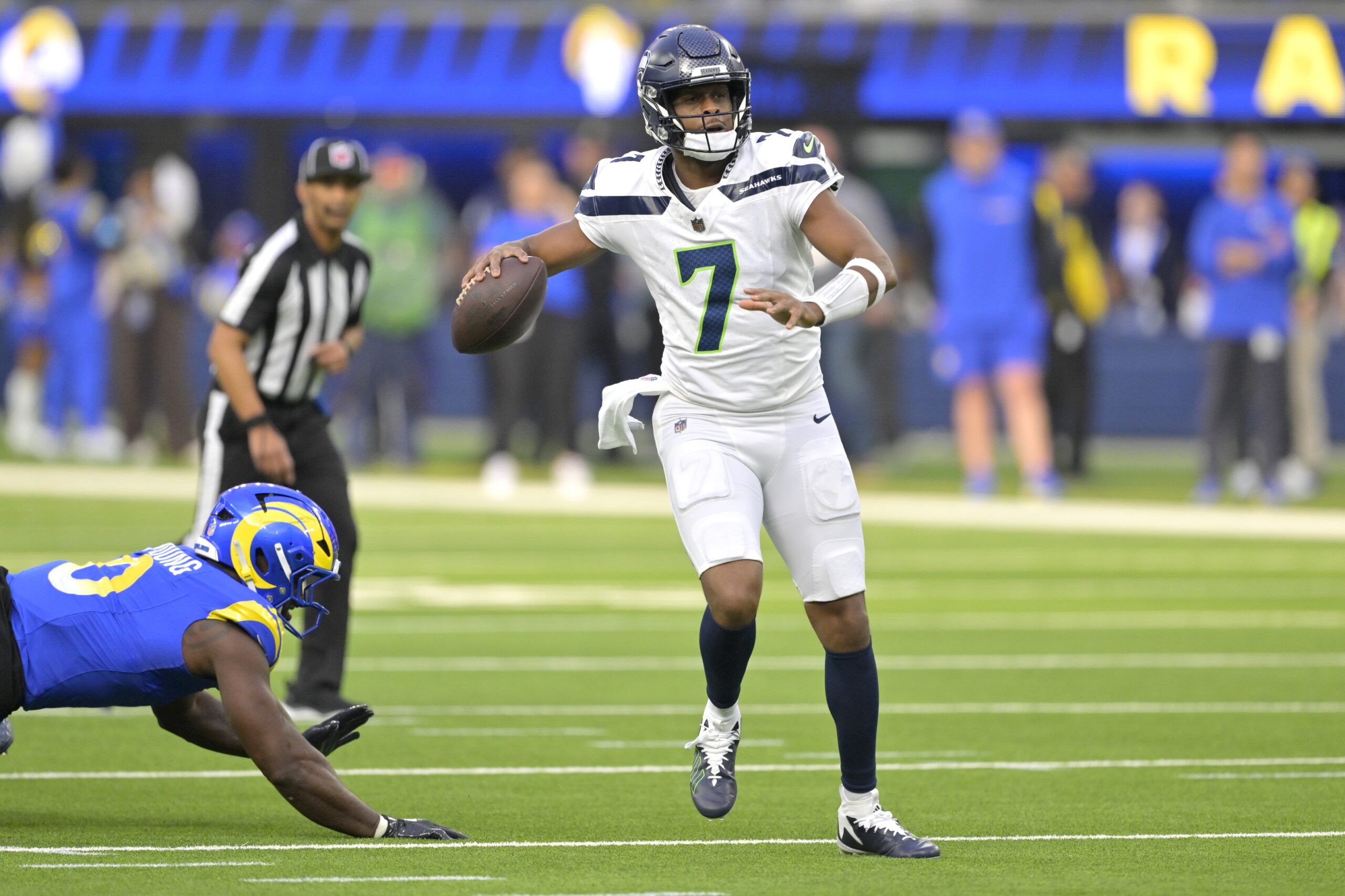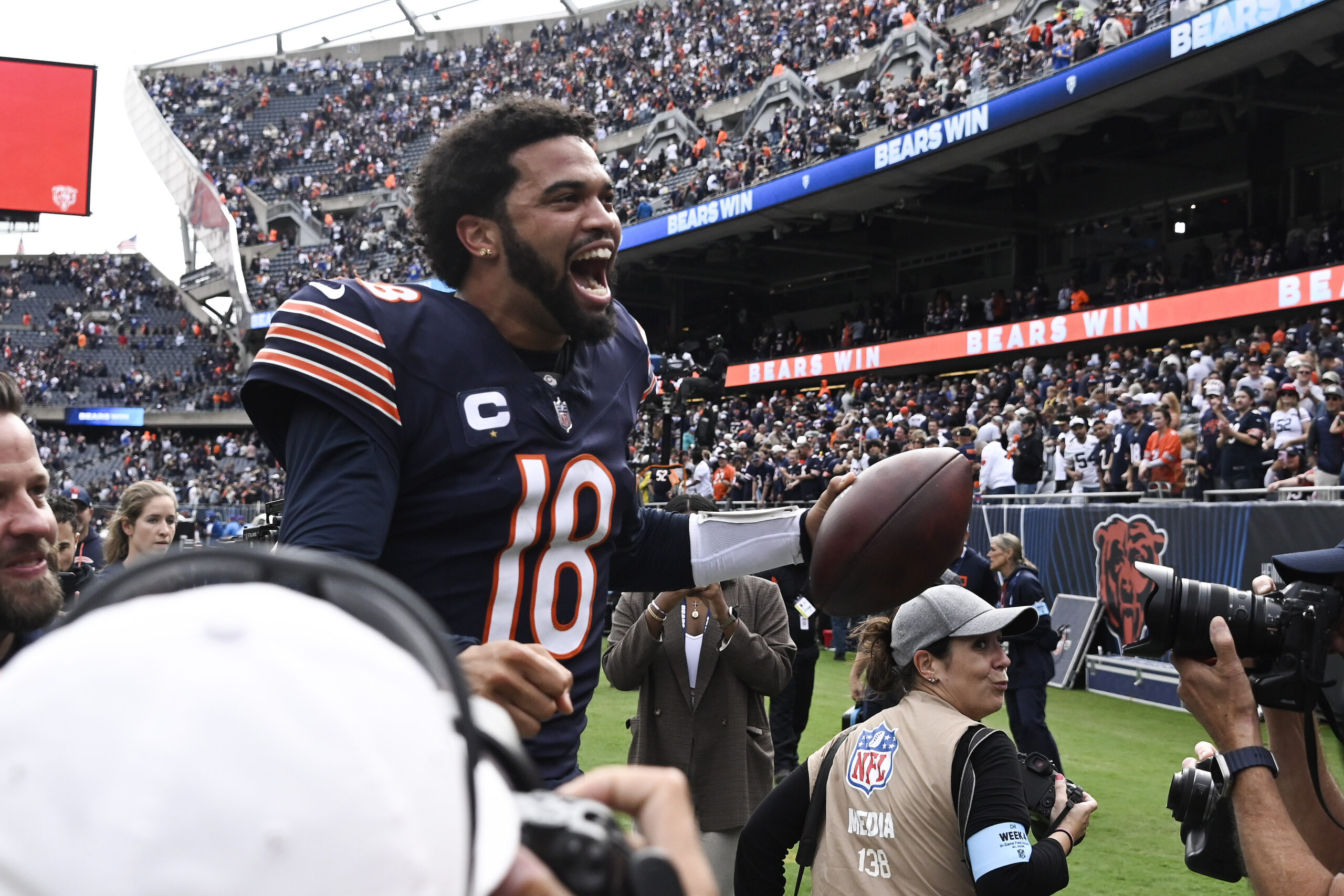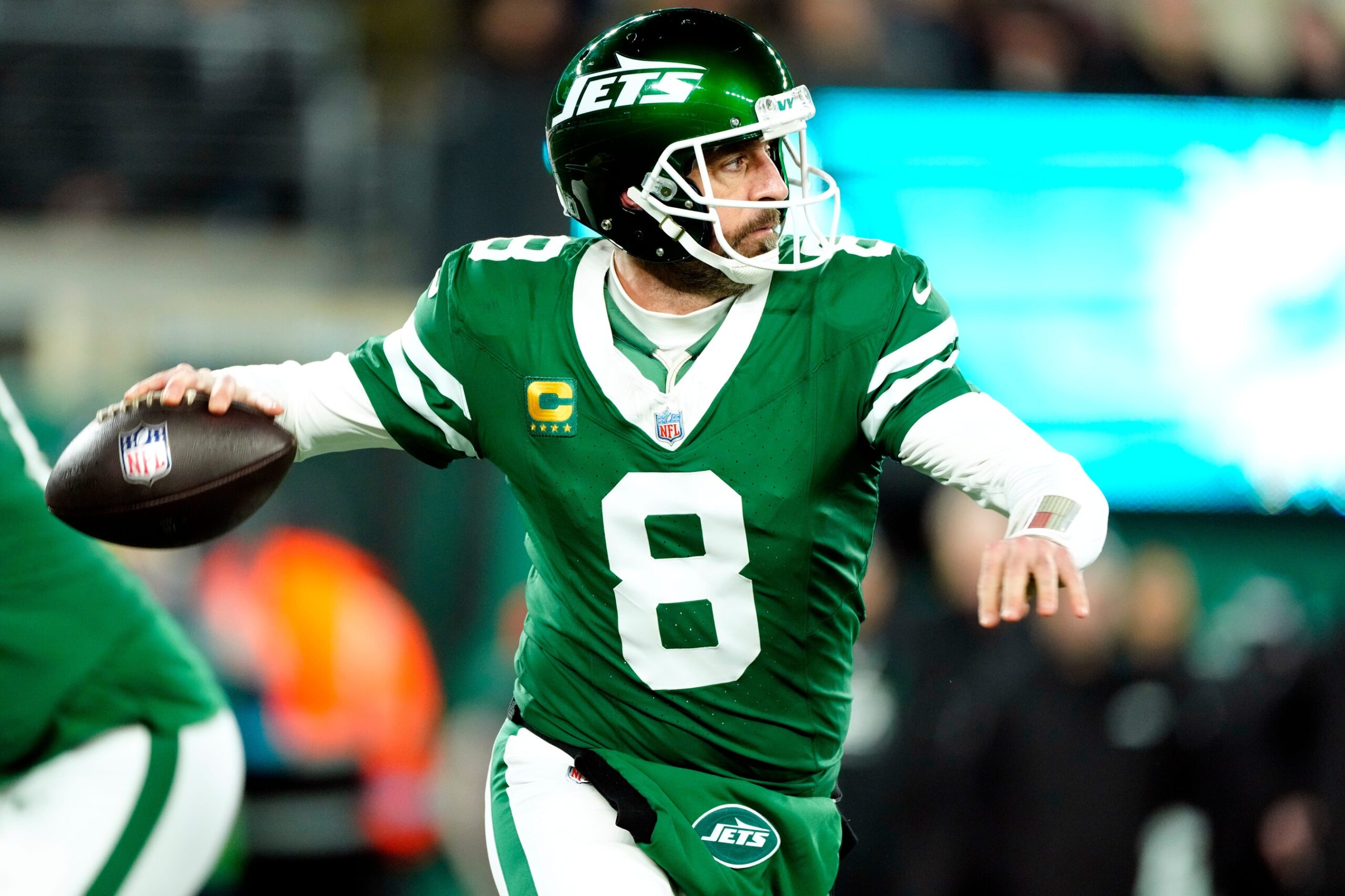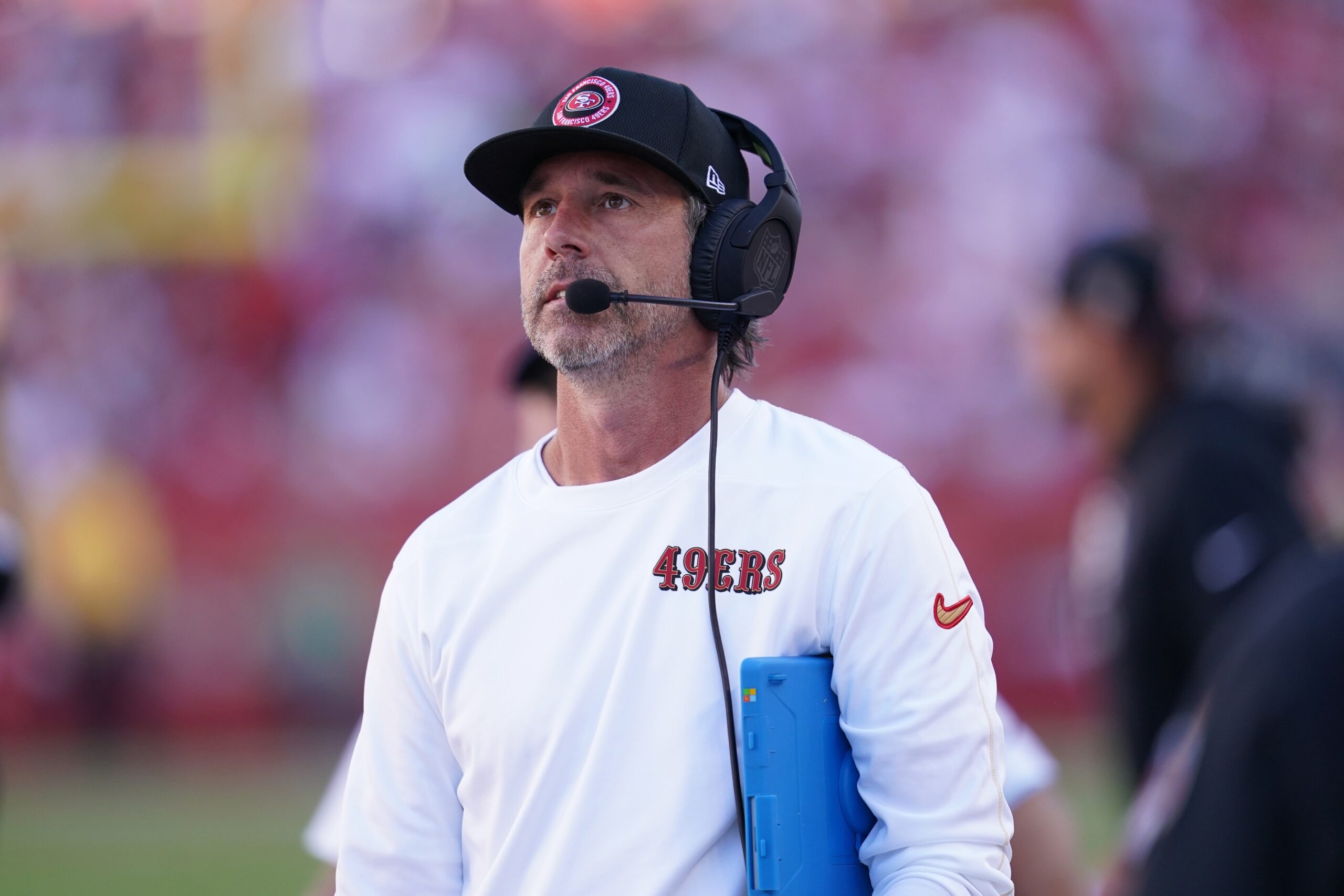NFL Analysis
10/17/24
7 min read
Is 2024 NFL Season The Start of a Running Game Revolution?
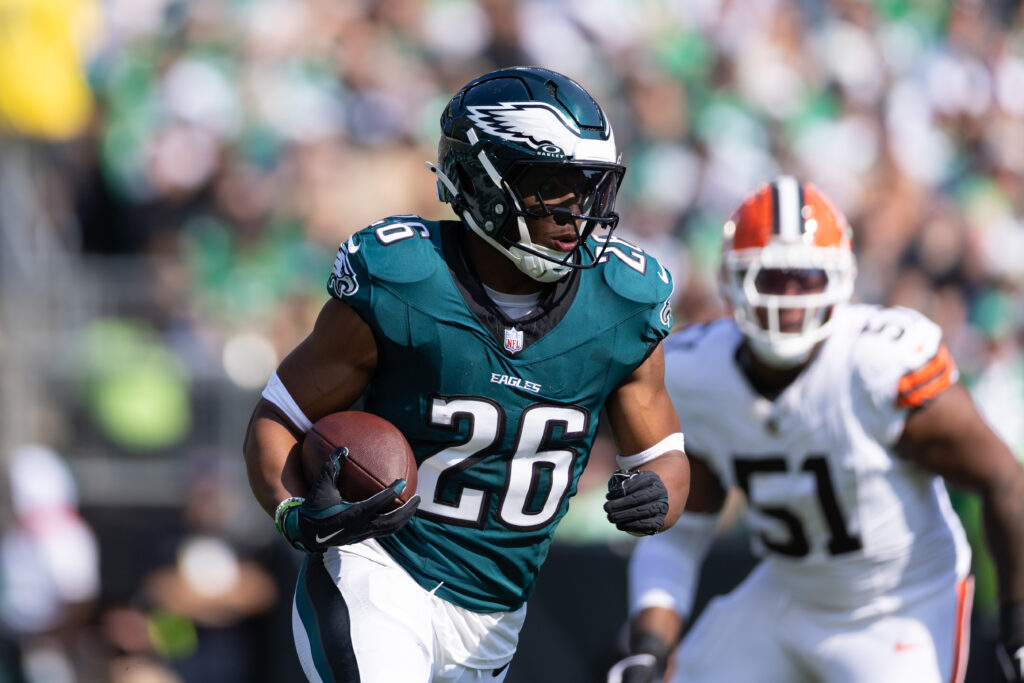
The running game is back, in a way. Early in the 2024 NFL season, when scoring and passing stats were down, the common response was to look for an emergence of the run game.
If defenses were going to sell out to stop the pass, as has been the case during the past few seasons, the opportunity to run the ball would be there and become more valuable. That has kind of been true.
Because passing stats are still down, TruMedia reports that efficiency on dropbacks and run plays is the closest it’s been in the past decade.
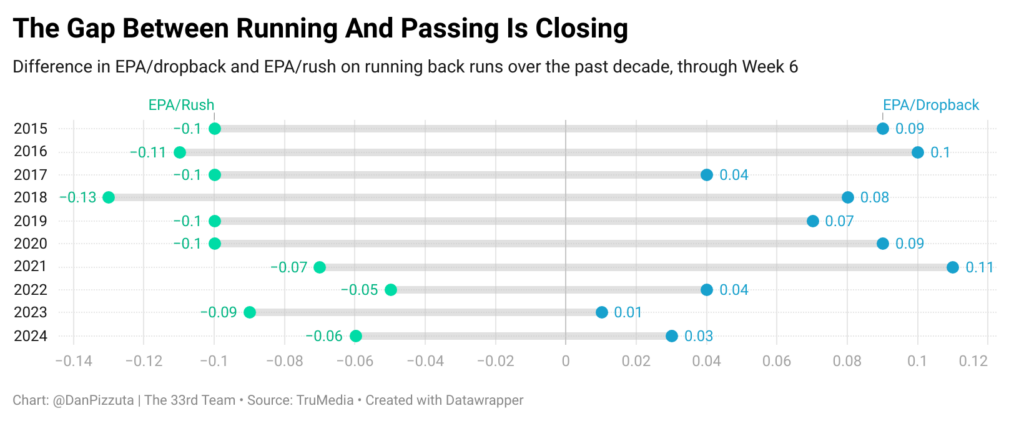
That gap has been shrinking during the past decade, but the current gap matches what it was through six weeks in 2022 and is just a tenth off from last season. It’s not an outlier.
The thought of how defenses have been defending offenses with safety positioning hasn’t had much of a change, either. This season, NFL offenses are averaging -0.04 EPA per rush and 4.8 yards per carry against single-high and -0.04 EPA per rush and 4.8 yards per carry against two-high. There’s a slight edge in success rate against two-high (39.2 percent) over single-high (38.8 percent), but it’s not a meaningful difference that has unlocked the run.
There has been a volume shift toward the running game, both overall and on early downs. Teams are running more often, which has led to the highest rushing yards per game average in the last 10 years.
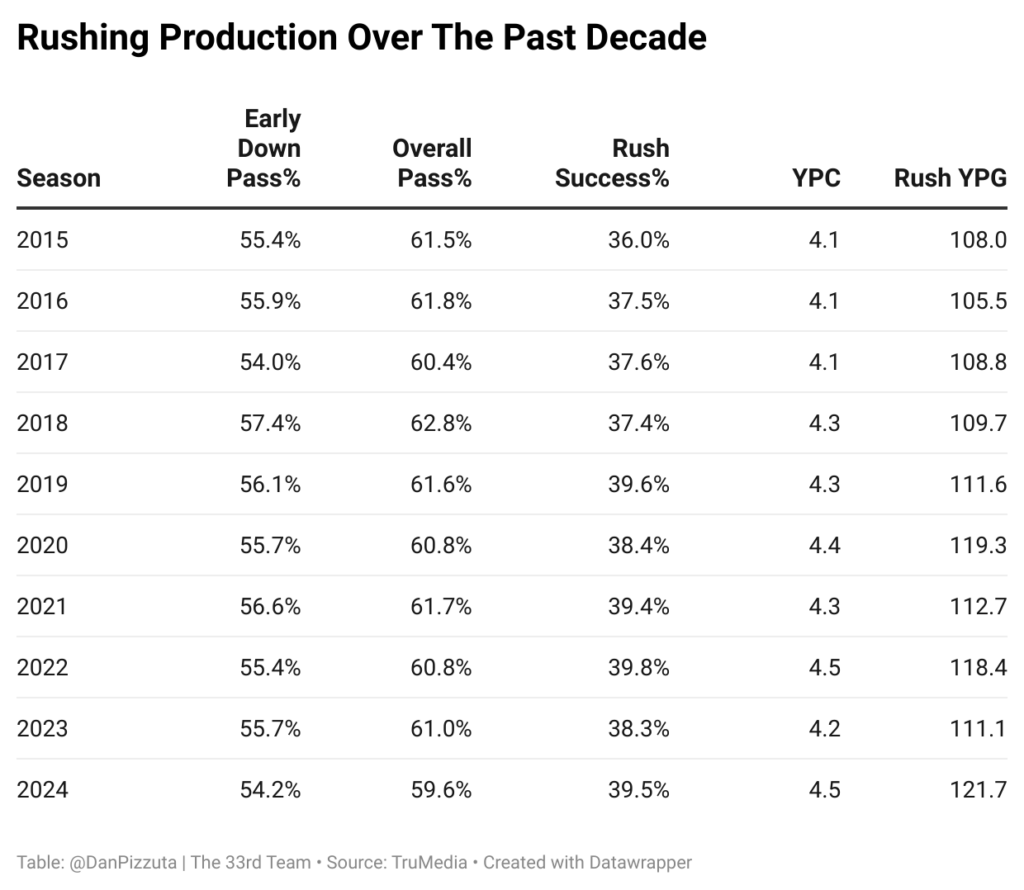
However, those numbers account for all rushing attempts, including non-running backs. Quarterbacks are running more than ever before, and offenses continue to use receivers effectively as runners. Look at the production divided up between the positions:
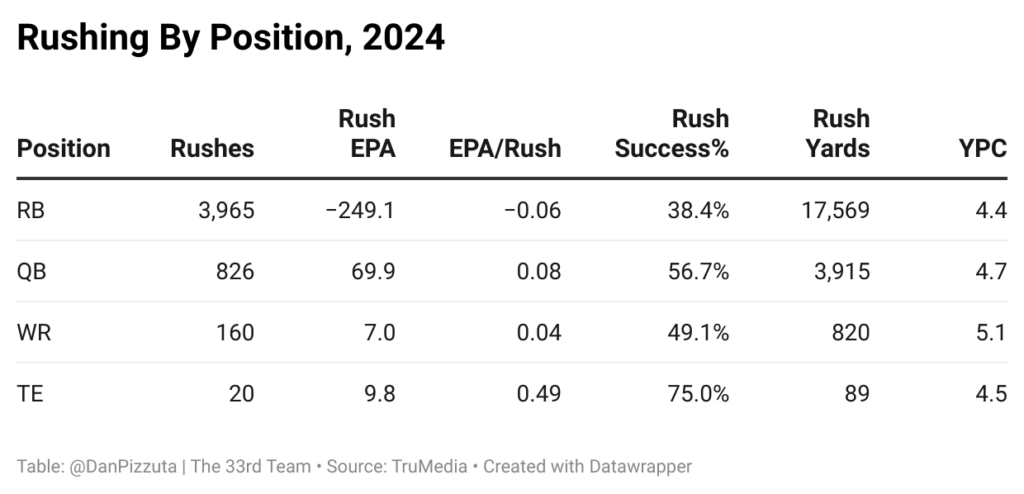
Do Running Backs Matter Again?
What is a difference-maker in the run game this season is how some of the league’s top backs are adding a new element to offenses and how teams have been smarter in the deployment of their backs.
We saw a ton of running back movement this offseason, as the cost of acquiring a top back came within the range of some No. 3 wide receivers across the league.
The three-year cash flow on the contract Saquon Barkley signed with the Philadelphia Eagles this season ($37.75 million) was below the three-year cash flow given to Darnell Mooney by the Atlanta Falcons ($39 million) per Over The Cap. In fact, those Mooney figures top what was given to Jonathan Taylor in 2023, which tops the running back market at $38.6 million.
Barkley has helped the Eagles' run game remain consistent while the passing game has been up and down due to quarterback play and injuries. Philadelphia ranks sixth in total EPA on running back carries, and those carries have come against the second-lowest rate of light boxes.
According to Next Gen Stats, Barkley has only been expected to have 3.8 yards per carry but has managed 5.3 yards per carry. His 1.5 rushing yards over expected per carry is the league's fifth-highest rate through Week 6.
While facing heavier boxes behind an offensive line that has not been as dominant of a run-blocking unit as it has in the past, Barkley has created explosive plays that have helped the offense more than the Eagles' backs did last season.
D’Andre Swift ran behind an offensive line that was clearly the best in the league but couldn't break off big plays. He finished the 2023 season with -0.3 rushing yards over expected per carry, which ranked 34th among 45 qualified running backs.
There was meat left on the bone in the running game, and the switch to Barkley has allowed the Eagles offense to get more of it, even as the overall running situation has not been as favorable this season.
There’s still a lot of work to be done in the Philadelphia offense, but with a less-skilled running back taking over these carries, things could be much worse.
It also doesn’t take a superstar to help improve a run game. Aaron Jones signed with the Minnesota Vikings for a one-year, $7 million contract after his release from the Green Bay Packers. The Vikings have gotten much better run blocking than they did last season, but Jones has gotten more out of it than Ty Chandler.
Next Gen Stats has Chandler with more expected rushing yards per carry (4.4) than Jones (4.2), but Jones has 4.9 yards per carry compared to Chandler's 3.5.
Jones has made most of his career out of staying away from negative plays, and he’s continued that while having more explosive runs in the Minnesota offense. This is also a case for how running styles can mesh with the blocking up front.
Jones is a more decisive quick-cut runner, and 54.9 percent of his runs have gone inside the tackles. Meanwhile, Chandler is more of a speed player who has gone inside the tackles on 38.1 percent of his attempts.
Figuring out how to split carries and responsibilities has also been a key to some of the league’s best-rushing offenses this season.
The Lions just extended David Montgomery for two years and $18.25 million. He has taken over much of the down-to-down between-the-tackles dirty work in Detroit, while former first-round pick Jahmyr Gibbs has slid in to create some explosives on the ground.
With that balance, the Lions have the highest rushing EPA on running back runs in the league.
A similar split has been made in Atlanta with Bijan Robinson and Tyler Allgeier, as the Falcons are fifth in rushing EPA.
Baltimore Sits At The Top
There’s been no better singular running back improvement than the Baltimore Ravens adding Derrick Henry to a backfield that includes Lamar Jackson. This duo brings together everything mentioned here — taking advantage of a running quarterback, the value of the contract, and fitting a back into a perfect scheme.
Henry has a sizable lead in rushing yards and rushing EPA over the next highest backs. It took two weeks for the Ravens to figure out Henry's best deployment, but they’ve figured it out, even as defenses have sold out to stop the run.
During the past two weeks, the Bengals and Commanders have loaded the box in an attempt to slow Henry down, but even when it’s worked, it’s left other parts of the offense free to go wild.
Jackson has more pass attempts against stacked boxes outside of the red zone than he’s had in any other season but one through Week 6. But this year, he has career highs in EPA per play (0.40) and yards per attempt (13.8) on those throws.
Henry and Jackson have opened up more opportunities for each other. While defenses can spend a game trying to wear Henry down, it’s been the other way around at the end of games.
Henry has been at his best later in games as he’s gotten to be a closer, and that’s not including the 51-yard run he had in overtime to seal a win against Cincinnati.
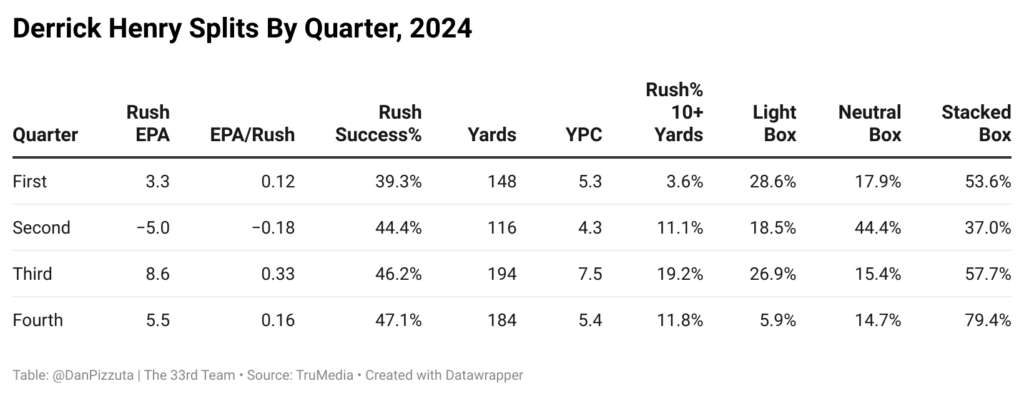
To this point, Henry has maintained his physicality with yards after contact, while his yards before contact have been as good as they were over the latter stretch of Henry’s career.
Even if the running game doesn’t fully cycle around to be the thing again — and that looks even less likely with passing offenses picking it up after a rough start to the season — we’re at a point where there’s not that wide of a gap between running and throwing.
Teams' use of their backs and deployment of the run game are getting smarter, at least for the best offenses in the league.
The run game has been valuable, and some of the league’s best backs have contributed. It’s still not a run-first league, but we’ve seen the value in being smart about the employment and deployment of backs who can make a difference for an offense.


